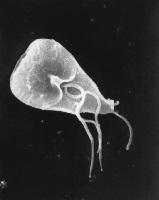BMC Infectious Diseases ended the year on a high with the publication of our special series on ‘How to treat severe infections in the ICU’. The series, commissioned by our Associate Editor Dimitrios Matthaiou, covered a wide range of topics and further information can be found on our blog.
Below we focus in on some of our other highlights from the different sections of the journal.
Bacterial & fungal diseases

Does using more antibiotics lead to increased resistance? Mike Pringle and colleagues answered this question with a ‘yes’ using of a systematic review and meta-analysis. This was one of our most accessed and most cited articles of 2014 proving that antibiotic resistance continues to be a huge focus in the community.
Another of our most highly accessed articles (which could equally have been placed in a number of other sections)focused on notifiable infectious diseases in those over 65 years old. Hans Blystad and colleagues conclude that invasive bacterial diseases, especially pneumococcal diseases, are a particular cause of concern in this patient group.
Hepatitis & co-infections
Claude P Muller and colleagues investigated the seroprevalence of hepatitis B inLao People’s Democratic Republic in this highly accessed article. Whilst earlier in the year Wei Meng and colleaguesinvestigated the stress caregivers of chronic viral hepatitis patients face, indicating more support is needed for this subject group.
HIV & co-infections
In one of our most highly accessed articles José Ramón Arribas and colleagues conclude that, although associated with more frequent episodes of viral rebounds, protease inhibitor monotherapy does not appear to be more associated with a higher prevalence of plasma residual viremia or more elevated inflammatory markers levels than triple drug therapy in HIV treatment.
Also highly accessed, Claudia Balotta and colleagues investigated the decline in treatment-related HIV-1 mutations indicating improvements in HIV treatment such as adherence to prescription guidelines.
Parasitological diseases

One of our most forwarded articles of 2014 was this study by Norhayati Moktar and colleagues on the molecular epidemiology of giardiasis.
Another protozoan parasite was the subject of one of our most cited articles of the year with this study by Eric Viscogliosi and colleagues on the high prevalence ofBlastocystis sp. in children living in the Senegal River Basin.
Sexually transmitted diseases
The high prevalence of high-risk human papillomavirus genotypes in young women in Germany was the subject of this study by Andreas M Kaufmann and colleagues in one of our most forwarded articles of 2014.
Chlamydia testing by General Practitioners (GPs) was investigated by Jane Hocking and colleagues, as part of the ACCEPt consortium, and this article was also featured on our blog.
Tuberculosis & other mycobacterial diseases
Childhood tuberculosis in the Netherlands was the subject of this article by Susan van den Hof and colleagues. Encouragingly they found that cases were generally detected at an early stage and treatment completion rates were high but made a number of suggestions to further improve this.
Another of our highly accessed articles from this section was this study by Knut Lonnroth and colleagues focusing on the best way to model TB screening.
Vaccines
Hazel M Dockrell and colleagues studied the immunogenicity in infants of the BCG vaccine and conclude that geographical location, season of birth, and timing of vaccination all affect this in another of our most viewed articles.
One of our most cited articles of 2014 was this study by Kimberly M Thompson and colleagues on strategies for polio vaccination.
Viral diseases

We turned back to 1918 with one of our most tweeted articles with this insight into the spread of the 1918-1919 influenza pandemic in India by Siddharth Chandra and Eva Kassens-Noor. The article was also featured in Science daily.
Influenza was also the subject of another social media hit with this study by Lyn Finelli and colleagues on reproduction numbers, the average number of secondary cases generated per typical infectious case, for various flu epidemics.
Comments